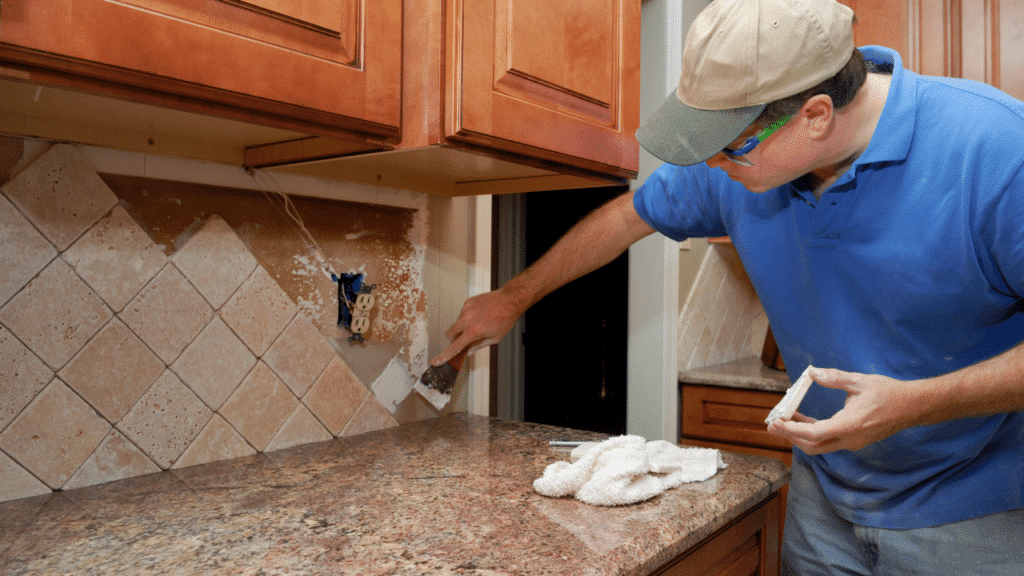It’s vital to harness the right tools for boosting your home improvement business, and Google Ads can be a game changer for generating high-quality leads. By effectively utilizing targeted advertising, you can connect with potential clients precisely when they are searching for your services. In this post, you’ll explore how Google Ads can enhance your marketing strategy and discover 5 Google Ads Targeting Strategies for Home Improvement that will elevate your outreach efforts and drive more qualified leads your way.
Key Takeaways:
- Targeted Advertising: Google Ads allows home improvement businesses to reach specific demographics and local audiences, ensuring that advertisements are seen by potential customers actively looking for services.
- Lead Generation: By using relevant keywords and optimizing ad campaigns, home improvement companies can generate high-quality leads that convert into sales.
- Performance Tracking: Google Ads provides detailed analytics and reporting tools, enabling businesses to assess the effectiveness of their campaigns and make data-driven adjustments for better results.

Understanding Home Improvement Marketing
Before exploring into the specifics of home improvement marketing, it’s imperative to grasp the landscape that surrounds it. Home improvement services range from renovations and landscaping to plumbing and electrical work, all aimed at enhancing the living spaces of homeowners and maintaining properties efficiently. With an overwhelming amount of information available online, you need to strategically position your services to stand out and attract potential clients.
The Importance of Online Presence
About 97% of consumers search for local services online, making it necessary for your business to establish a strong online presence. From your website to social media channels, every aspect of your digital footprint plays a part in how potential clients perceive your services. Investing time and resources into optimizing your online presence can significantly increase your visibility and credibility in a competitive market.
Targeting Homeowners and Property Managers
Against the common belief that home improvement marketing should target everyone, focusing specifically on homeowners and property managers allows you to tailor your marketing strategies effectively. These groups have distinct needs and pain points, making it imperative for you to understand their unique preferences and challenges.
And when you center your efforts on homeowners and property managers, you can create customized ads and content that resonate with their specific situations. Homeowners typically look for solutions to enhance their living spaces, while property managers prioritize reliable service providers to maintain their properties. By addressing their concerns directly in your messaging, you can better capture their attention and convert them into high-quality leads for your home improvement business.
Overview of Google Ads
If you want to enhance your home improvement marketing strategy, understanding Google Ads is necessary. Google Ads is a digital advertising platform that allows businesses to promote their services through paid listings on the Google search engine and its partner sites.
What Are Google Ads?
Across the globe, millions of businesses leverage Google Ads to attract potential customers. This platform enables your ads to appear when users search for relevant keywords, driving highly targeted traffic to your website or landing pages.
Different Types of Google Ads (Search, Display, Video)
Against a backdrop of diverse advertising options, Google Ads offers three primary formats: Search, Display, and Video. Each type caters to various marketing objectives and targets different stages of the buyer’s journey.
| Type | Description |
|---|---|
| Search Ads | Text-based ads shown on search results pages. |
| Display Ads | Visual banner ads placed on websites in the Google Display Network. |
| Video Ads | Ads that appear on YouTube and other video platforms. |
| Shopping Ads | Product-based ads showcasing images and prices. |
| App Ads | Ads promoting mobile apps across various platforms. |
Different formats allow you to engage with potential customers in various ways. Search ads capture intent, Display ads build brand awareness, and Video ads craft a narrative about your service. You should consider which format aligns best with your specific goals.
- Search ads are best for targeting immediate needs.
- Display ads are effective for nurturing leads.
- Video ads provide a means for deeper engagement.
- Shopping ads are useful for product visibility.
- The chosen ad format significantly influences your overall strategy.
Benefits of Using Google Ads for Home Improvement
Overview of the benefits reveals that Google Ads can help you efficiently reach high-quality leads within the home improvement sector. Leveraging this platform allows you to target audiences based on location, interests, and specific search queries.
Utilizing Google Ads can boost your visibility substantially. It not only provides immediate traction but also allows you to track your advertising performance in real-time. This means you can refine your strategy, maximize your return on investment, and cater your messaging directly to the needs of your target audience.
- Increased visibility for your services enhances brand awareness.
- Cost-effective advertising enables a flexible budget.
- Real-time performance tracking allows for timely adjustments.
- Targeted campaigns help you reach the right homeowners.
- The tailored approach fosters better engagement with potential leads.

Setting Up a Google Ads Campaign
Despite the myriad of options available for home improvement marketing, Google Ads provides you with a powerful platform to attract high-quality leads. By strategically investing in this advertising medium, you can make the most of your budget and optimize your marketing efforts. To explore more about these benefits, check out The Power of Google Ads: Revolutionizing Lead ….
Defining Campaign Goals
Campaign goals are the foundation upon which your entire Google Ads campaign will be built. Establishing clear objectives allows you to tailor your strategy, budget, and messaging, ensuring that your efforts align with your overall business aims. Do you want to increase website traffic, generate new leads, or enhance brand awareness? Define what success looks like for your campaign.
Identifying Target Audience
Defining your target audience is key to the effectiveness of your ads. You need to know who your ideal clients are to tailor your messages directly to them. Consider demographics such as age, location, and interests, all of which will help you refine your messaging and attract the right consumers.
A well-defined target audience will allow you to create more relevant ads that resonate with potential leads. Use tools like Google Analytics to gather insights on who currently visits your website and identify characteristics among your best clients. This valuable information will guide you in addressing their pain points and fulfilling their needs through your Google Ads campaigns.
Keyword Research and Selection
An effective Google Ads campaign hinges on keyword research and selection. By identifying the terms and phrases that your potential customers are actively searching for, you can align your ads with user intent, driving more relevant traffic to your site. Consider both short-tail and long-tail keywords to maximize your reach.
And don’t forget about the competition. Analyze which keywords are being targeted by your competitors, and seek to differentiate your approach. Utilize Google’s Keyword Planner to explore options and get insights into search volume and competitiveness, allowing you to make informed decisions about the keywords that best suit your campaign goals.
Crafting Compelling Ad Copy
Among the most impactful aspects of your Google Ads is the ad copy itself. Compelling ad copy grabs attention and encourages users to take action, whether it’s clicking to your website or calling for a quote. Ensure your messaging clearly highlights your unique selling proposition and incorporates relevant keywords to enhance visibility.
Compelling ad copy should address your target audience’s pain points, making it clear how your products or services can provide solutions. Consider using strong calls-to-action and creating a sense of urgency, inviting users to engage with your ad and ultimately convert into leads. This approach can significantly influence the effectiveness of your Google Ads campaign and, in turn, your overall marketing success.
Optimizing Google Ads for Maximum Impact
To maximize your returns on Google Ads, you need to focus on several strategies that enhance your campaigns’ effectiveness. By refining your approach, you can attract more high-quality leads and ensure your home improvement marketing efforts yield substantial results.
Utilizing Ad Extensions
Behind every successful ad campaign lies a well-executed strategy that includes ad extensions. By leveraging ad extensions, you provide additional information that can improve your ad’s visibility and appeal. These extensions can showcase your services, location, and contact details, ultimately guiding potential customers to choose your company over competitors.
A/B Testing for Better Performance
Google offers powerful tools to conduct A/B testing, allowing you to compare different ad variations. This process helps you identify which elements resonate best with your audience, such as headlines, descriptions, and images.
To implement A/B testing effectively, you should create two or more versions of your ads that differ in key aspects. By running these versions simultaneously, you can gather data on performance metrics such as click-through rates and conversions. Based on the results, you can optimize your ads for higher engagement, ultimately attracting more quality leads.
Adjusting Bids and Budgets Strategically
Better management of your bids and budgets can lead to improved ad performance and cost efficiency. By analyzing performance metrics, you can allocate your budget where it will generate the highest return on investment.
Due to the dynamic nature of online advertising, adjusting your bids and budgets based on the performance of your campaigns is vital. You should monitor factors such as peak engagement times and seasonal trends to ensure you’re investing wisely. This strategy allows you to adjust your approach in real-time, maximizing the visibility of your ads while minimizing wasted expenditure. Consider automating this process through Google Ads’ smart bidding features to achieve optimal results.
Tracking and Measuring Success
After launching your Google Ads campaigns, the next step is to track and measure your success. This allows you to fine-tune your strategies to ensure you are consistently generating high-quality leads for your home improvement business.
Google Ads Analytics Overview
After you set up your Google Ads, the platform provides extensive analytics features. You’ll gain access to a wealth of data that can help you understand how your ads perform, which keywords drive traffic, and how visitors interact with your website. Utilizing these insights will help you optimize your campaigns effectively.
Key Performance Indicators (KPIs) to Monitor
At this stage, it’s important to keep an eye on specific Key Performance Indicators (KPIs). These metrics help you evaluate your ad performance, cost-effectiveness, and lead generation success. By focusing on KPIs like click-through rates (CTR), conversion rates, and cost per lead, you can make informed decisions about your campaigns.
Monitor your KPIs regularly to understand which aspects of your ads resonate with your audience. A high click-through rate indicates that your headlines and offers are appealing, while a strong conversion rate shows that your landing pages are effective. Also, analyzing the cost per lead will help you ascertain whether you’re spending your ad budget wisely. These insights provide a roadmap for continuous improvement.
Adjusting Strategies Based on Data Insights
Against the backdrop of your KPIs, you may find that certain strategies are not yielding the desired results. This is where data insights become invaluable. By carefully analyzing your campaign performance, you can identify areas needing adjustment, whether that involves reallocating your budget, modifying ad copy, or refining your targeting parameters.
Measuring the effectiveness of your adjustments is vital for long-term success. Regularly review metrics after implementing changes, and look for patterns in your data. This not only helps you identify what works but also what does not. Staying agile allows you to adapt your strategies based on real-time insights, ultimately leading to improved campaign performance and better quality leads for your home improvement business.
Case Studies and Success Stories
Once again, let’s take a closer look at how Google Ads can effectively generate high-quality leads for home improvement businesses. These case studies demonstrate tangible results achieved through targeted campaigns:
- XYZ Construction: Implemented a Google Ads campaign focused on kitchen remodeling. They saw a 40% increase in lead generation and a 30% boost in conversion rates within the first six months.
- ABC Home Improvements: Utilized local targeting and keywords specific to their services. As a result, they experienced a 50% decrease in cost-per-lead and a 25% increase in overall project inquiries.
- 123 Landscaping: Launched a seasonal promotion through Google Ads that led to a 60% increase in leads during the spring months, significantly propelling their summer projects.
- Quality Roofing: Focusing on emergency roofing repairs, their campaign generated a remarkable 70% increase in inquiries, with 85% of those converting into paying customers.
For more detailed insights, you can check out this article on How to generate home improvement leads using Google Ads.
Examples of Successful Home Improvement Campaigns
Behind each successful campaign is a strategic approach tailored to the unique needs of the business. For instance, one home improvement contractor utilized ad extensions to showcase testimonials and previous projects, resulting in an impressive engagement rate and quality lead acquisition.
Lessons Learned from Industry Leaders
Behind the industries’ most successful campaigns lies valuable insight that you can leverage. Top-performing advertisers often focus on continuous testing and analysis of their ads, leading to refined strategies that increase effectiveness over time.
But it’s more than just testing; understanding audience behavior and preferences is vital. Targeting specific demographics and using relevant keywords can enhance your ad performance. Additionally, consistent monitoring and adaptation based on seasonal trends can keep your campaigns fresh and engaging. By analyzing these factors, you can better align your efforts with market demands, ensuring a consistent flow of high-quality leads.
Future Trends in Home Improvement Marketing
Unlike traditional advertising methods, the future of home improvement marketing is leaning heavily toward innovative technologies and data-driven strategies. Staying ahead of these trends can give you a competitive edge in the ever-evolving marketplace.
The Rise of AI and Automation in Ads
To maximize your advertising efforts, consider the integration of artificial intelligence (AI) and automation. These tools are designed to help you target your ads more effectively and improve their overall performance, enabling you to connect with potential customers more efficiently.
Integrating Google Ads with Other Marketing Channels
By combining Google Ads with your other marketing channels, you can create a cohesive strategy that amplifies your reach. This integration allows you to leverage the strengths of each platform, ensuring your messaging resonates across multiple touchpoints and increases your chances of conversion.
Home improvement marketing thrives on a multi-channel approach. By integrating Google Ads with social media, email marketing, and content marketing, you can guide your audience through the customer journey more effectively. This holistic strategy enables you to engage your viewers with targeted messaging tailored to their preferences, leading to higher-quality leads and greater brand loyalty.

Conclusion
Taking this into account, leveraging Google Ads for your home improvement business can significantly enhance your ability to attract high-quality leads. By targeting the right keywords and demographics, you can connect with potential customers actively seeking your services. Investing in well-structured ad campaigns not only amplifies your visibility but also boosts your credibility in the competitive home improvement market. As you refine your approach and optimize your ads, you’ll likely see an increase in qualified inquiries and conversions, ultimately driving your business growth.
FAQ
Q: What is Home Improvement Marketing and why is it important?
A: Home Improvement Marketing refers to the strategies and tactics used by businesses in the home improvement sector to attract customers and promote their services. It’s important because the home improvement industry is highly competitive, and effectively marketing your services can help you stand out, reach your target audience, and ultimately drive sales. Utilizing various marketing channels, including online advertising like Google Ads, can help generate qualified leads and grow your business.
Q: How do Google Ads work for generating leads in the home improvement sector?
A: Google Ads operates on a pay-per-click model, where businesses create targeted ad campaigns that appear in Google search results when specific keywords are searched. For home improvement services, advertisers can choose keywords related to their services (e.g., “roofing repair,” “kitchen remodeling”). When potential customers search for these terms, your ads appear, directing them to your website or landing page, increasing the chance of converting them into leads.
Q: What types of Google Ads are most effective for home improvement businesses?
A: The most effective types of Google Ads for home improvement businesses include Search Ads, which show text-based ads based on keyword searches; Display Ads, which appear on various websites in the Google Display Network; and Local Service Ads, which connect service providers with local customers looking for home improvement services. Each ad type serves different purposes but collectively can enhance visibility and drive high-quality leads.
Q: How can I improve the performance of my Google Ads campaign for home improvement services?
A: To enhance your Google Ads campaign performance, consider the following strategies:
1. Conduct thorough keyword research to target relevant and high-intent keywords.
2. Create compelling ad copy that highlights your unique selling propositions and encourages clicks.
3. Use ad extensions to provide additional information, such as phone numbers and service areas.
4. Continuously monitor and analyze campaign performance using Google Analytics to make necessary adjustments.
5. A/B test different ad formats and messaging to identify what resonates best with your audience.
Q: What are some common mistakes to avoid when using Google Ads for home improvement marketing?
A: Some common mistakes to avoid include:
1. Not conducting proper keyword research, leading to targeting irrelevant or overly competitive keywords.
2. Failing to optimize landing pages, which can result in high bounce rates and low conversion rates.
3. Setting a low budget or not utilizing remarketing strategies, missing out on potential repeat leads.
4. Ignoring ad performance data, rather than using it to refine targeting, messaging, and ad placements.
5. Neglecting to invest in ongoing training or professional assistance to keep up with changes in Google Ads features and algorithms.





